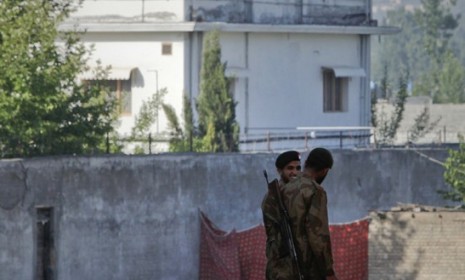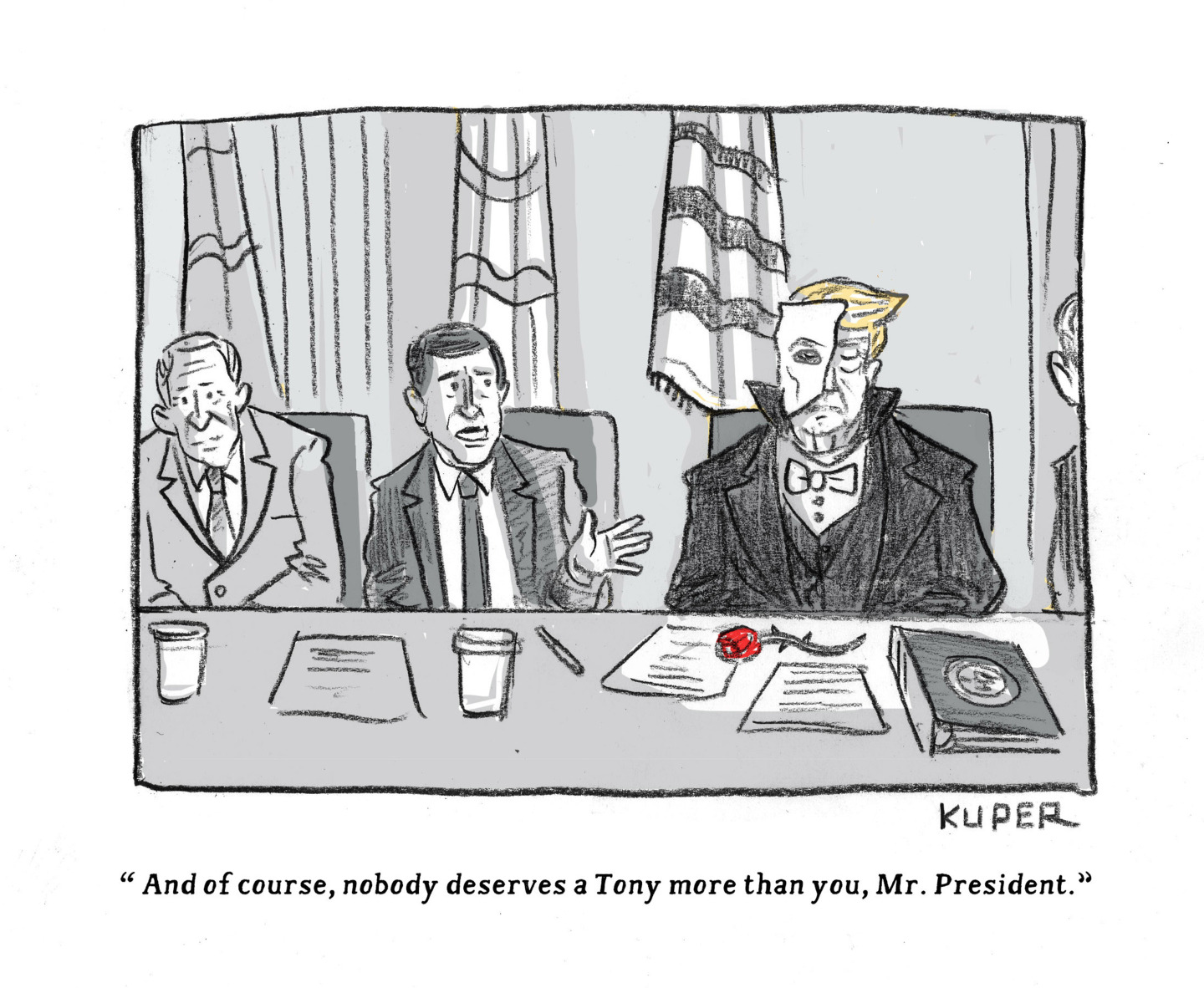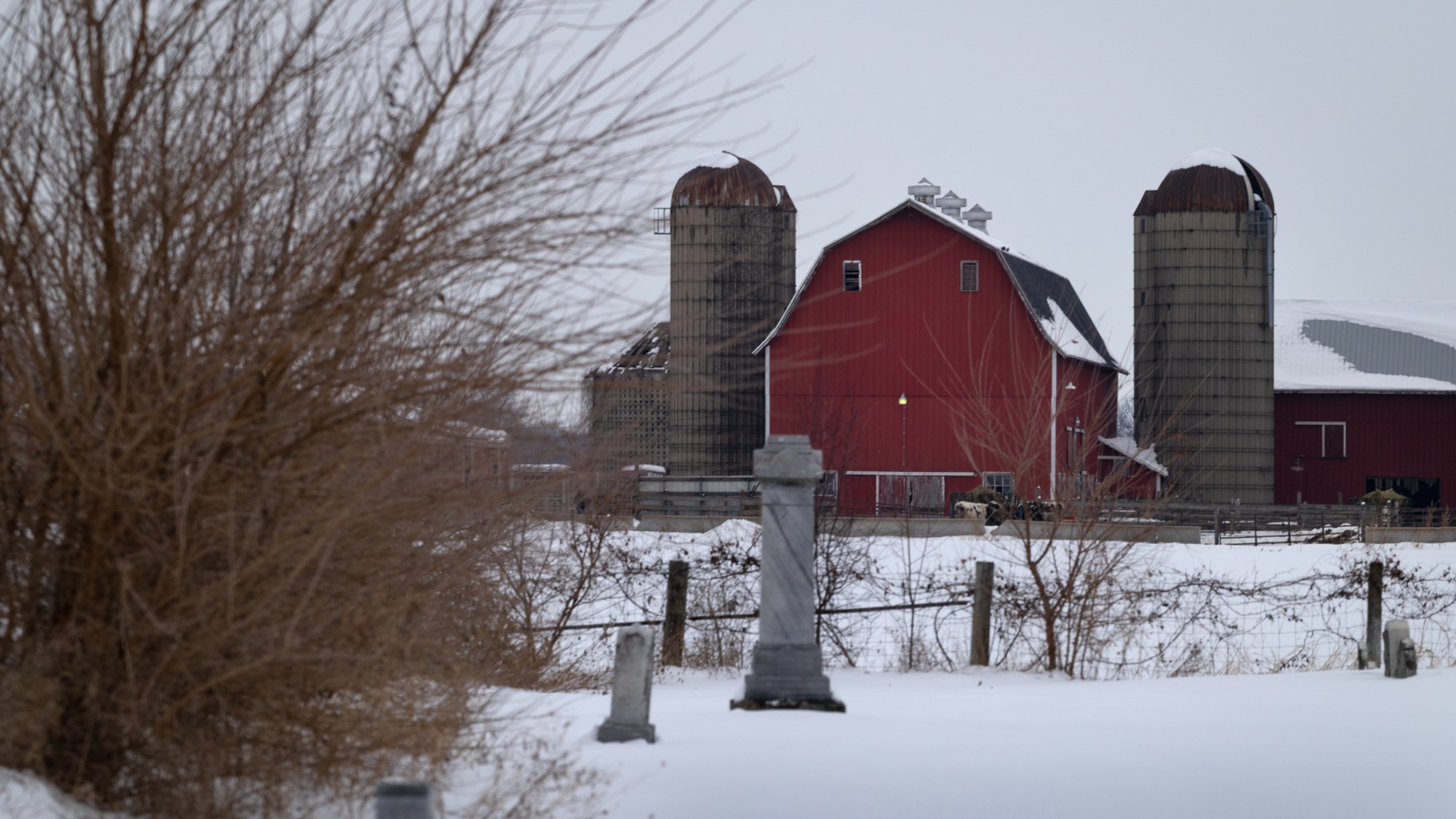The New Yorker's 'cinematic' bin Laden raid story: 8 takeaways
The most detailed account yet of the epic raid includes juicy new tidbits on abandoned plans, bin Laden's burial at sea, and a much-hyped war dog

The story of the daring U.S. raid that killed Osama bin Laden on May 1 has been recounted many times, but Nicholas Schmidle at The New Yorker has just come out with the most complete version of the tale yet. Schmidle's long, "cinematic retelling" of the raid is quite dramatic and detailed — largely because he draws information from the Navy SEALs who conducted the mission, as well as various Pentagon and White House sources. Here are eight of The New Yorker's best new additions to the bin Laden raid saga:
1. Discarded plans included tunnels, bombs, and a raid on foot
President Obama was offered two broad ways to take out the al Qaeda chief: A commando raid, or an airstrike on the compound in Abbottabad, Pakistan, where the CIA believed bin Laden to be hiding. The raid option might have dropped Navy SEALs outside of town, forcing them to sneak to the compound on foot, and then tunnel into the building. But such ideas were rejected because of the high risk of detection, the certainty of tired SEALs, the difficulty of tunneling through a high water table. As for dropping 32 smart bombs on the building — the option favored by Defense Secretary Robert Gates — Obama balked at "the prospect of flattening a Pakistani city," Schmidle writes.
The Week
Escape your echo chamber. Get the facts behind the news, plus analysis from multiple perspectives.

Sign up for The Week's Free Newsletters
From our morning news briefing to a weekly Good News Newsletter, get the best of The Week delivered directly to your inbox.
From our morning news briefing to a weekly Good News Newsletter, get the best of The Week delivered directly to your inbox.
2. Team Six had raided Pakistan before, and also killed Somali pirates
SEALs from Team Six — formally called the Naval Special Warfare Development Group, or DEVGRU — had already conducted about a dozen covert raids into Pakistani territory before the bin Laden operation. In fact, the bin Laden crew, from DEVGRU's Red Squadron, had spent the previous decade on a tough rotation of missions in Afghanistan, Iraq, Yemen, and the Horn of Africa, including the April 2009 sniper operation that killed three Somali pirates and rescued American tanker captain Richard Phillips.
3. The plan was to kill bin Laden, not capture him
Schmidle quotes a special-ops officer "deeply familiar with the bin Laden raid," who says that the decision to shoot and kill the unarmed bin Laden wasn't made in the heat of the moment. "There was never any question of detaining or capturing him," the officer said. "No one wanted detainees." That assertion "presents the strongest challenge yet to the Obama's administration’s insistence that the al Qaeda chief... could have been captured if he had 'conspicuously surrendered,'" says Jon Swaine in Britain's Telegraph.
A free daily email with the biggest news stories of the day – and the best features from TheWeek.com
4. Bin Laden isn't the first al Qaeda leader buried at sea
The Obama team faced criticism for dumping bin Laden's body into the Arabian Sea, but this "blunt way of ending the bin Laden myth" wasn't unprecedented. After SEALs killed East Africa al Qaeda chief Saleh Ali Saleh Nabhan during a September 2009 helicopter raid inside Somalia, they flew his body to a ship in the Indian Ocean, gave him Muslim burial rites, and dropped him into the sea. However, before pushing bin Laden overboard, Obama counterterrorism adviser John Brennan called a Saudi intelligence contact to see if Saudi Arabia wanted the body. "Your plan sounds like a good one," the Saudi reportedly replied.
5. Two more bin Laden nicknames: "The Pacer," and "Crankshaft"
Given the long manhunt, perhaps it's no surprise that bin Laden had several nicknames. At the Joint Special Operations Command (JSOC), bin Laden's target name was "Crankshaft." At the CIA, where bin Laden was (correctly) thought to be the tall man wandering the grounds of the Abbottabad compound but never leaving, he was called "the Pacer." At no point was his nickname "Geronimo," as reported early on. That was the mission's confirmation code for sighting bin Laden. The first message back from the SEAL who fired the fatal shots into bin Laden, Schmidle reveals, was: "For God and country — Geronimo, Geronimo, Geronimo.... Geronimo E.K.I.A." (Enemy killed in action).
6. The heroic war dog wasn't really put to use
When Obama met the SEAL team on May 6, he asked to see the dog who went on the mission, a Belgian Malinois named Cairo. "If you want to meet the dog, Mr. President, I advise you to bring treats," joked the Red Squadron commander who led the raid. Cairo helped guard the perimeter of the compound during the raid, but never had to fulfill the role that put him on the raid team: If bin Laden had been hard to find, or tried to escape in a tunnel, Cairo was there to sniff him out.
7. It was a routine raid, like "mowing the lawn"
Obama's meeting with the SEAL team was "extraordinary," says deputy national security adviser Ben Rhodes, because "they knew he had staked his presidency on this. He knew they staked their lives on it." But a senior Pentagon official tells Schmidle that the operation was actually pretty routine. "This was one of almost two thousand missions that have been conducted over the last couple of years, night after night," he said, comparing it to "mowing the lawn." On the same night bin Laden was killed, for example, special-ops forces killed or capture 15 or 20 targets during 12 missions in Afghanistan.
8. We may never know all the details
Obama and his senior advisers watched the first part of the raid — including the terrifying crash of one of the two Black Hawk helicopters — live, via a feed from an unmanned drone flying 15,000 feet above Abbottabad. But once the SEALs entered the compound, "what happened next is not precisely clear," says Schmidle. The SEALs weren't wearing helmet cams, as CBS reported, and since they were rattled by not knowing the layout of the compound, facing armed resistance, and were "possibly minutes away from ending the costliest manhunt in American history," their recollection of events "may be imprecise and, thus, subject to dispute."
-
 5 prize-winning cartoons about Donald Trump's appetite for awards
5 prize-winning cartoons about Donald Trump's appetite for awardsCartoons Artists take on operatic ambitions, peace prize pacifiers, and more
-
 Will Trump’s $12 billion bailout solve the farm crisis?
Will Trump’s $12 billion bailout solve the farm crisis?Today’s Big Question Agriculture sector says it wants trade, not aid
-
 ‘City leaders must recognize its residents as part of its lifeblood’
‘City leaders must recognize its residents as part of its lifeblood’Instant Opinion Opinion, comment and editorials of the day